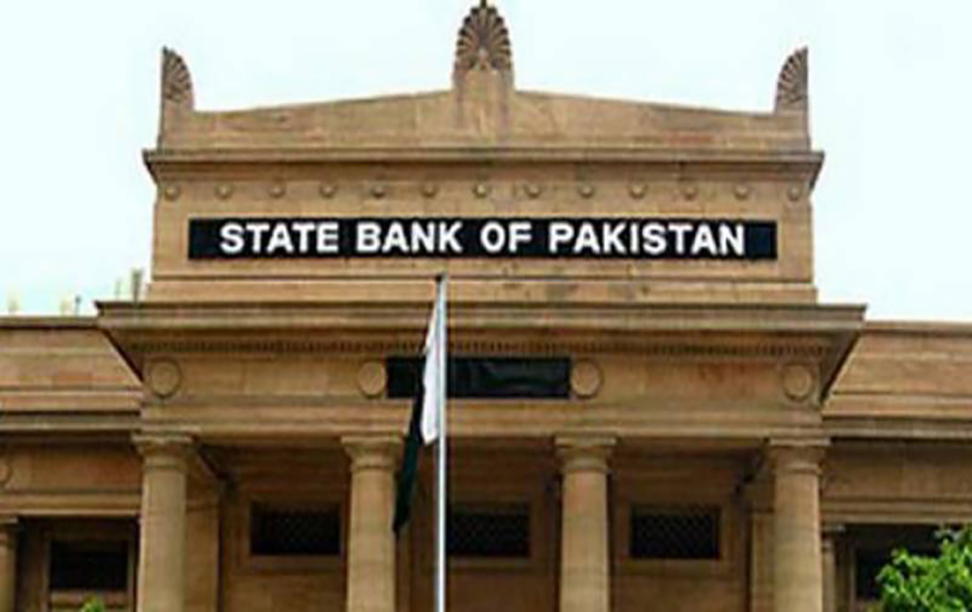SBP maintains policy rate at 22%

By MG News | September 14, 2023 at 04:49 PM GMT+05:00
September 14, 2023 (MLN): The Monetary Policy Committee (MPC) of the State Bank of Pakistan (SBP) in its meeting held today, has decided to keep the policy rate unchanged at 22%.
The decision came in contrast with the market expectations wherein the majority of market participants were in consensus on a rate hike by 100-200bps.
This decision considers the latest inflation outturn reflecting the continuing declining trend in inflation from its peak of 38% in May to 27.4% in August 2023.
Even though global oil prices have risen recently and are being passed on to consumers through adjustments in administered energy prices, inflation is projected to remain on a downward trajectory, especially from the second half of this year.
As such, real interest rates continue to remain in positive territory on a forward-looking basis.
Moreover, the expected ease in supply constraints owing to better agriculture output and the recent administrative measures against speculative activity in the FX and commodity markets would also support the inflation outlook.
The MPC noted four key developments since its July meeting. First, the agricultural outlook has improved, based on the latest data on cotton arrivals, better input conditions, and satellite data indicating healthy vegetation of other crops.
Second, global oil prices have been rising and are now hovering over $90/barrel level.
Third, as anticipated, the current account posted a deficit in July after remaining in surplus for the last four months, partly reflecting the impact of the recent ease in import restrictions.
Finally, recent administrative and regulatory measures aimed at improving the availability of essential food commodities and curbing illegal activities in the foreign exchange market have begun to yield results.
This has helped in narrowing the gap between the interbank and open market exchange rates.
The MPC noted that it will continue to monitor the risks to the inflation outlook and, if required, it will take appropriate action to achieve the objective of price stability.
At the same time, the MPC also stressed on maintaining a prudent fiscal stance to keep aggregate demand in check.
This is necessary to bring inflation down on a sustainable basis and to achieve the medium-term target of 5-7% by end-FY25.
Real sector:
The latest available high-frequency indicators depict some improvement in economic activity.
There is a moderate pick up in sales of key inputs, like POL, fertilizer, and cement, along with a slight increase in import volumes.
At the same time, with better input conditions and the latest updates, the MPC noted that the outlook of the agriculture sector has improved.
Earlier concerns related to floods have subsided and cotton arrivals almost doubled from last year.
Moreover, the Committee assessed that domestic demand will remain contained due to the unfolding impact of monetary tightening and envisaged fiscal consolidation.
These developments align with the MPC’s earlier expectations about moderate growth this year.
External sector:
The current account balance recorded a deficit of $809 million in July 2023 after posting surpluses in the preceding four months.
This was mainly in line with the earlier full-year current account projection for FY24, which already took into account the withdrawal of import prioritization guidelines and the resultant pickup in import volumes.
Nonetheless, the MPC views that overall imports are expected to remain in check, supported by the favorable trend in non-oil commodity prices, moderate domestic demand and improved cotton production.
Favourable price prices and available surplus bode well for the export outlook.
Moreover, the recent structural reforms related to exchange companies will strengthen their governance structure and improve market functioning.
The Committee expects the current account deficit to remain in the earlier projected range for FY24.
Fiscal sector:
In the initial two months of FY24, FBR’s revenues recorded a 27.2% increase over the same period last year. This improvement reflects the impact of fiscal measures and some recovery in economic activity.
The MPC views that achieving the targeted primary surplus of 0.4% of GDP is critical to support monetary policy in delivering on its price stability objective.
More importantly, attaining fiscal consolidation through broadening the tax base, providing targeted subsidies only to the most vulnerable, and reducing losses of public sector enterprises through privatization or reforms would help bring inflation down in the targeted range and achieve sustainable economic growth over the medium term.
Money and credit:
The latest data as of September 1 shows that broad money (M2) growth has decelerated to 13.6% YoY from 14.2% YoY observed in June 2023, primarily driven by a significant slowdown in credit to the private sector.
Similar to M2, growth in reserve money has also decelerated in FY24 so far. This trend mainly reflects the significant reduction in currency in circulation.
In the future, expected fiscal consolidation, realization of planned external inflows and an uptick in economic activity would provide space for a moderate expansion in private sector credit this year.
Inflation outlook:
National CPI inflation decelerated to 27.4% in August on a yearly basis from 28.3% in July, with moderation in food inflation.
However, the decline in inflation was lower than anticipated, largely due to the surge in global oil prices and their pass-through to administered energy prices.
Also, as per the latest surveys, near-term inflation expectations of consumers and businesses have reversed from their earlier declining trend. The Committee noted that these results partly reflect the impact of heightened uncertainty in the FX markets – particularly in the open market – when these surveys were conducted.
In this context, the MPC noted the recent regulatory and law-enforcement measures will help address supply constraints in commodity and illegal activity in FX markets.
These developments – along with an improved agriculture outlook and tight monetary policy stance – will help ensure that inflation remains on a downward trajectory, especially from the second half of this year.
The MPC also noted that inflation is likely to increase significantly in September, mainly due to the base effect and the adjustment in energy prices.
Inflation is expected to subsequently decline in October and maintain its downward trajectory from thereon.
Copyright Mettis Link News
Related News
| Name | Price/Vol | %Chg/NChg |
|---|---|---|
| KSE100 | 128,199.43 336.91M |
2.05% 2572.11 |
| ALLSHR | 79,787.62 1,023.63M |
1.53% 1202.91 |
| KSE30 | 39,105.00 121.90M |
2.49% 951.21 |
| KMI30 | 186,915.61 131.16M |
1.10% 2029.11 |
| KMIALLSHR | 54,201.88 553.60M |
0.81% 438.07 |
| BKTi | 33,476.68 51.49M |
4.87% 1555.00 |
| OGTi | 27,962.58 9.77M |
0.68% 188.60 |
| Symbol | Bid/Ask | High/Low |
|---|
| Name | Last | High/Low | Chg/%Chg |
|---|---|---|---|
| BITCOIN FUTURES | 105,860.00 | 106,200.00 105,440.00 |
110.00 0.10% |
| BRENT CRUDE | 67.09 | 67.29 67.06 |
-0.02 -0.03% |
| RICHARDS BAY COAL MONTHLY | 97.50 | 97.50 97.50 |
0.70 0.72% |
| ROTTERDAM COAL MONTHLY | 103.80 | 103.80 103.80 |
-3.45 -3.22% |
| USD RBD PALM OLEIN | 998.50 | 998.50 998.50 |
0.00 0.00% |
| CRUDE OIL - WTI | 65.38 | 65.65 65.34 |
-0.07 -0.11% |
| SUGAR #11 WORLD | 15.70 | 16.21 15.55 |
-0.50 -3.09% |
Chart of the Day
Latest News
Top 5 things to watch in this week
Pakistan Stock Movers
| Name | Last | Chg/%Chg |
|---|
| Name | Last | Chg/%Chg |
|---|




 CPI
CPI